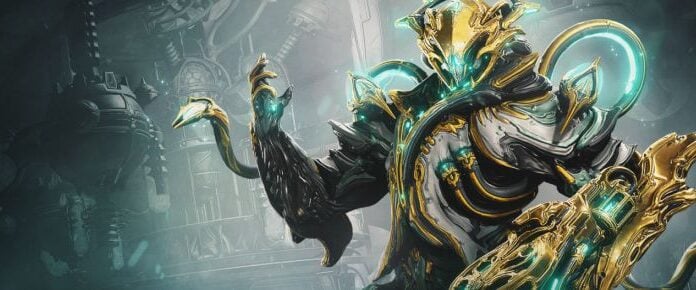
Hello, friends, and welcome back to Choose My Adventure. If you’re just tuning in, you need to know that this round of columns is focusing on indie sandbox Project Gorgon. Last week, I asked y’all to vote on my character’s race and gender, and it was a close race, with the innuendo-loving Elves and the feral feline Rakshasa vying for supremacy while the ever-milquetoast Humans watched from the sidelines. I thought for sure that the Elves had it in the bag, but in the end, the Rakshasa cinched the victory. The contest to choose my character’s gender was a good sight closer, as it always is, but in the end, the decision went for male by a slim margin of 10 votes. The result of your votes is Koshekh the Rakshasa, pictured above in all his fabulous feline glory.
Although Koshekh and I have only just begun to dip our toes into the fathomless deeps of Project Gorgon, we’ve already had a few delightfully bizarre escapades. Koshekh’s adventure, like all others in Project Gorgon, begins at character creation. Following a brief introductory scene where poor Koshekh was incapacitated by a trio of grotesque, levitating crones who lamented that they were unable to break his will and ultimately decided to just wipe his mind and call it a day, he awoke on the shore of a desolate island.
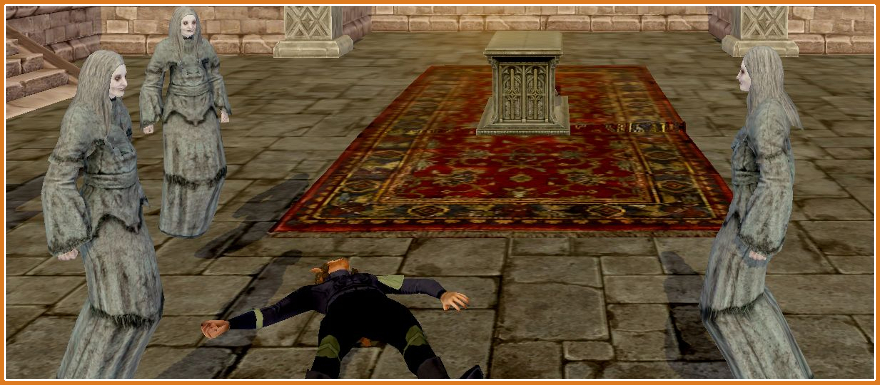
Thus Koshekh took his first steps into this daunting new world with no memories of his past and naught but the tattered clothes on his back. Thankfully, a nearby backpack conveniently supplied me with a sword, which I immediately put to use cutting down some reanimated skeletons wandering the coast.
Project Gorgon’s combat system is simple enough: At any given time, you can have two of your available combat skillsets active — from the outset, my only options were Sword and Unarmed, though my selection would soon expand. Each of your two active skillsets is assigned to its own six-slot hotbar, which means that only six abilities from each skillset are available at once.
Once you’re in a fight, there are a few things you have to keep an eye on: First, there are your resources, which are health, armor, and power. Health is, well, your health – it drops to zero, you die. Thankfully, you’ve got armor; as long as you have armor points remaining, incoming damage will be applied to your armor rather than your health, though how much damage your armor can absorb depends on your gear (of course), your resistance to a certain type of damage, buffs and debuffs that affect damage absorption, and things like that. Lastly, power is required to perform most of your combat abilities. It regenerates slowly over time, though some abilities also provide a “combat refresh,” which restores some power.
Enemy NPCs, like player characters, each have their own health and armor pools – represented on the enemy’s nameplate by a heart icon and a shield icon, respectively – but instead of power, enemies have a resource called rage, represented by a fist icon. As an enemy deals and takes damage, its fury meter fills. Once the meter is full, the enemy can use an extra-powerful rage attack, which often deals additional damage and/or inflicts a debilitating status effect on the target. Thankfully, there are a number of abilities – such as Riposte, one of the starting abilities of the Sword skillset – that can reduce an enemy’s rage meter or slow the rate at which rage accrues.
After dispatching a handful of skeletons, I’d picked up a few extra levels in the Sword skill, earning me a couple of handy new abilities. More importantly, however, I’d managed to pilfer a few pieces of shiny new equipment off of my fallen foes. If you’re a fan of unique and varied gear stats, then you’ll probably be a fan of Project Gorgon’s loot drops.
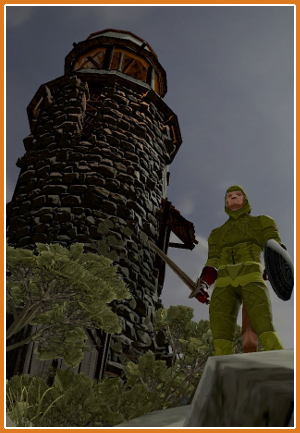 Since the game is entirely centered around skills, doing away with character levels entirely, each piece of gear you find requires you to be of a certain level in one or more specific skillsets. For instance, a given piece of armor may require you to have a Sword skill level of 5 and an Unarmed skill level of 2.
Since the game is entirely centered around skills, doing away with character levels entirely, each piece of gear you find requires you to be of a certain level in one or more specific skillsets. For instance, a given piece of armor may require you to have a Sword skill level of 5 and an Unarmed skill level of 2.
More interestingly, though, is the sheer variety of stat bonuses a piece of gear can provide. While many pieces of gear do provide flat increases to a character’s base statistics – armor, power regeneration, etc. – they often provide interesting and unique bonuses that apply only to specific skills. Koshekh’s current pair of boots, for example, grants a +1 damage bonus to his Sword Slash and Thrusting Blade abilities and gives his Many Cuts ability a chance to stun targets with less than a third of their maximum HP remaining.
So basically, gearing up isn’t just a matter of stacking as much of a certain stat as you possibly can; if you want to outfit your character for peak performance, you’re going to have to hunt down gear that provides the boosts you want to the abilities that are most important to your build and playstyle. On the one hand, this is pretty daunting to me, as I’ve never been particularly strong at the number-crunching aspect of RPG stat builds, but on the other, I appreciate a gear system that goes beyond the standard “+10 Agility” style of stats in favor of providing players with the power to tweak their builds in ways that make them feel truly unique.
Having acquired some new duds and a shoddy but serviceable weapon, I decided it was time to do a little exploration to see what secrets the island held and, ultimately, figure out how the hell to get off of this rock. A short jaunt away from my initial spawn, I found a ramshackle little hut that was home to a depressed and forlorn Elf by the name of Riger. Riger, like me, has had his memory wiped, and apparently he’s been here a while, having given up hope of escape long ago. When I asked if there was anything I could do for him, he told me that he’d just like to be able to feel some hope again. Aw, bless his heart. I told him I’d see what I could do, and he was kind enough to let me take a quick power nap in his bed (though he didn’t yet trust me enough to let me read his prized possession, a tattered psychology textbook).
I ventured forth from his hut, inspired by my newfound purpose, only to be ambushed and promptly dispatched by half a dozen spiders that seemed to skitter out of thin air. Delightful. This did, however, give me my first few points of death experience, and when I respawned, I was afflicted with a debuff: hydrophobia. This debuff didn’t actually do anything, mechanically speaking, but the game encouraged that I weave it into my roleplay to represent the impact of my brush with death. I love this, hands-down. It doesn’t force you to do anything if you’re not a roleplaying type, but it provides roleplayers with a quick, off-the-cuff idea to add some spice to their interactions.
There didn’t seem to be any sort of mechanical death penalty, at least not yet, and regardless of how you feel about that overall, I was pretty OK with it at the time since it let me pick myself up, brush myself off, and continue with my island exploration. Before long, I spotted a mysterious glowing obelisk. Interacting with it brought up a window that informed me that the fourth coordinate was 8, which didn’t really mean anything to me at the time, but I figured it had to be part of the key to escaping this island prison, so I jotted it down in my handy-dandy notebook, which is integrated directly into the quest tracker window.
It’s refreshing to see a game that doesn’t do everything for you, preventing players from having to do even a minor amount of record-keeping and note-taking, while also providing the tools to make doing so convenient and hassle-free. At this point I’m probably most impressed with all the small, “old-school” touches that the Project Gorgon team has managed to integrate into the game without doing so in such a way that makes the game feel archaic.
Further surveying the island led me to a locked chest surrounded by four stone arches. I know a puzzle when I see one, so I started fiddling with the arches and soon surmised that it was a puzzle of the good old-fashioned “activate the items in the right order” variety. While I later found a note that provided a barely encrypted solution to the puzzle, this one was simple enough to solve by brute force, and in due time, the contents of the chest were mine. Inside, I found some miraculously still-edible foodstuffs and, for some reason, instructions on how to tame rats.
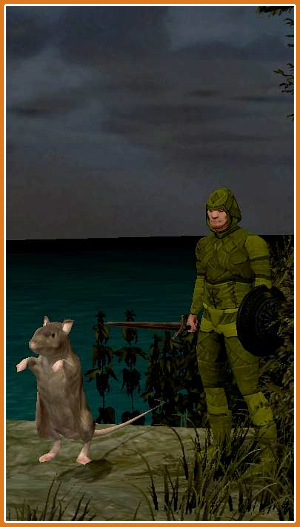 So of course, like any logical, sane person, I decided that escaping this island and unraveling the mystery of my magically-erased memories could wait; I wanted a pet rat, dammit. As it turns out, taming a rat isn’t so arcane of an art: Just give a rat a piece of cheese and voila, it’ll follow you around like the beggar rodent it is. Hardly the sort of mystical wisdom you’d need to lock away in a magically-sealed chest, I think, but what do I know? Unfortunately, the charm only lasts as long as you remain in the rat’s home zone, so I knew from the start that my time with my vermin pal would soon come to an end. Still, he was a friendly companion in an otherwise grim, inhospitable place, and I’ll remember him fondly.
So of course, like any logical, sane person, I decided that escaping this island and unraveling the mystery of my magically-erased memories could wait; I wanted a pet rat, dammit. As it turns out, taming a rat isn’t so arcane of an art: Just give a rat a piece of cheese and voila, it’ll follow you around like the beggar rodent it is. Hardly the sort of mystical wisdom you’d need to lock away in a magically-sealed chest, I think, but what do I know? Unfortunately, the charm only lasts as long as you remain in the rat’s home zone, so I knew from the start that my time with my vermin pal would soon come to an end. Still, he was a friendly companion in an otherwise grim, inhospitable place, and I’ll remember him fondly.
With my new traveling partner in tow, I continued my journey around the island in search of the obelisks that would provide me with the remaining digits to the coordinates that would, presumably, eventually allow me to escape, though I still wasn’t sure how they were going to go about doing that. But that particular puzzle was soon set aside yet again when I stumbled upon a doorway nearly concealed in the side of a mountain.
When I stepped through, I found myself in a small hallway complex that had apparently been tunneled into the mountainside. I strolled the halls cautiously, convinced that whatever called this place home was going to pop out and put a sudden end to my life at any moment, but the first room I came across contained nothing but the tattered remains of a few books and a dusty old record-keeping golem.
Among the scattered book pages, I found an alchemical recipe for a potion called “pick-me-up juice” which according to the tooltip could be used to “encourage unhappy people to feel happier for a time” – just the medicine that Riger fellow needed, I figured. Another fragment of parchment held a children’s rhyme regarding the number of “godlings” in the sky; a nice touch, I thought, but ultimately irrelevant. The record-keeping golem, likewise, proved to be of little use, though I did note that before denying my request for information, it asked me to provide my name – perhaps with the right name, I could get access to something juicier. I made a note to come back to it later.
I did, however, manage to discern from the golem’s dialogue that this place used to be the site of some kind of school of magic, though apparently some kind of disaster had befallen it, leaving it abandoned and in ruins. Interesting enough. Satisfied with my discoveries, I continued down the hallways.
The next room I came across was empty save for an alcove at the back that was guarded by an impassable magical force field. Behind it I could see a treasure chest and some other lootable bits and baubles. Interacting with the force field provided me with a prompt: “How many godlings?” Aha, not such an irrelevant nursery rhyme after all. One quick jaunt and a little basic arithmetic later, and voila, the puzzle was solved, the force field removed, and the treasure mine for the taking.
The chest contained a beginner’s bow and some arrows, which added Archery to my arsenal of combat skills, and a few other odds and ends. Not a bad haul, but there was still more to explore. As I began to creep down the final length of the hallway, my screen was soon flooded with a flurry of warnings:
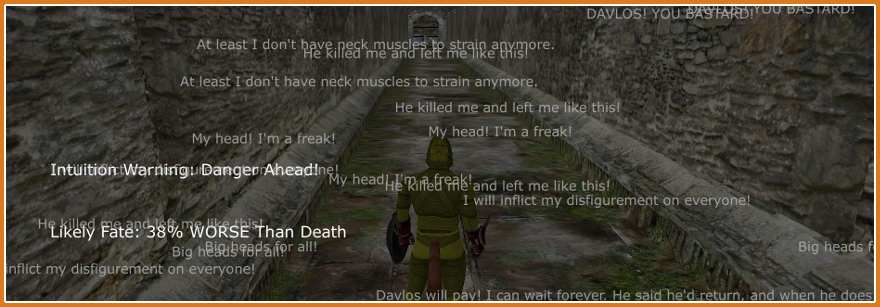
Well, that’s foreboding. These warnings were accompanied by a tutorial tooltip that stressed the fact that a particularly powerful enemy lay ahead, one which had the ability to put a permanent curse on me should I fail to kill it – which, it also stressed, I almost certainly would if I tried to do it on my own. As luck would have it, a few other wandering adventurers had entered the hall behind me, and after a bit of chit-chat, we decided to face the boss together. I’ll avoid too many details for fear of excessive spoilers, but in the end, we triumphed over the boss and made away with handfuls of shiny loot.
After I figured I’d seen all there was to see in the abandoned would-be Scholomance, I made my way back to the surface to gather the requisite materials to mix up a batch of pick-me-up juice, which I promptly delivered to Riger the forlorn Elf. As a sign of his gratitude for my returning to lift his spirits, he allowed me to read his prized psychology textbook, granting me access to the Psychology combat skillset, which includes such abilities as Psychoanalyze and Tell Me About Your Mother. Time to get Freudian.
As I pondered where to explore next – at this point I had made my way across the majority of the island and found four of the coordinate obelisks – I noticed a lighthouse sitting atop a mountain. Somehow I had completely missed it earlier, since apparently I never bothered to angle my camera upwards. That seemed like as good of a place as any to investigate for clues to my escape, so up I went.
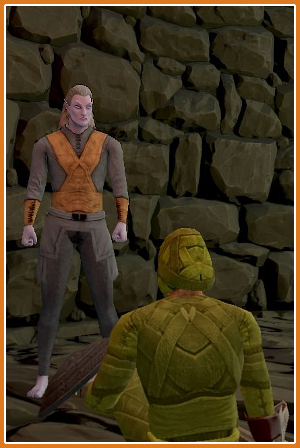 The lighthouse had a sole inhabitant – an Elf by the name of Elmetaph. Upon speaking with him, I was rather surprised to learn that he recognized me. Apparently, he had once been a professor at the decrepit school I had just finished exploring, and I had been his pupil. What subject did he teach, you ask? Conveniently enough, he was the professor of teleportation. Perfect, right?
The lighthouse had a sole inhabitant – an Elf by the name of Elmetaph. Upon speaking with him, I was rather surprised to learn that he recognized me. Apparently, he had once been a professor at the decrepit school I had just finished exploring, and I had been his pupil. What subject did he teach, you ask? Conveniently enough, he was the professor of teleportation. Perfect, right?
I asked him to teach me to teleport so I could get myself the hell out of here, to which he happily agreed. One quick tutoring session later, and I was ready to teleport far, far away. But there was a hitch: Elmetaph forgot to tell me that I probably shouldn’t bind my recall point to this island, since that would make it rather difficult for me to teleport off of it. Whoops.
There was, however, another way. Elmetaph himself could teleport me, but in order to ensure that I didn’t wind up at the bottom of the ocean or halfway inside a mountain, I’d have to come up with some way to specify my destination – some kind of coordinates, perhaps. And suddenly, the penny dropped. Without further ado, I supplied him with the coordinates I had discovered from the obelisks.
With his parting words, Elmetaph recommended that I seek out Statehelm, the seat of the Council record-keepers (whoever they are) and my best bet for learning more about my forgotten past. And with that I was gone, far away from that wretched place. When I regained my bearings, I found myself … nowhere in particular, really. But off in the distance, I could see buildings, the walls of a city. Civilization, at last.
And that, my friends, is where this first part of my tale ends, and where your part in writing the next chapter begins. This week, I’d like y’all to go ahead and make a few basic decisions about my character’s build and tell me what kind of shenanigans I should seek out next.
So, first up on the poll: On which two combat skillsets should I set my focus? Note that I actually have a rather strong desire not to spoil anything for myself, given the game’s apparent emphasis on exploration and discovery. If you’d like to read up on the various choices available to you, here’s a link to the game’s wiki, but as for me, I’m going in blind. With that in mind, I won’t be able to offer much in the way of insight as to each skillset’s general playstyle, so either do some research on the wiki or just vote for whatever you think sounds like fun; it’ll be an adventure either way.
And before anyone gets up in arms, I’d like to assure you all that the vocal support in the last column’s comments urging me to pursue a beast-form have been heard loud and clear; for now, though, I’d like to start slow. Consider it something to look forward to.
Secondly, I’d like for Koshekh to go ahead and pick up a trade or two. It’s good to be handy, right? So again, here is a list of the various skillsets you get to choose from, and again, I have little to no idea what any of them do, so go wild. Embrace the unknown, all that jazz. Since there are so bloody many of them, I’m giving all of you three votes, and I’ll do my best to dabble in each of the top three results throughout my time in the game.
Vote wisely or with complete ignorance; I’m sure the outcome will be ridiculous and entertaining no matter what. But whatever you do, make sure you get your votes in by Sunday, June 26th, at 11:59 p.m. EDT.
CMA: Which combat skillsets should I focus on?
- Animal Handling (11%, 22 Votes)
- Archery (3%, 7 Votes)
- Battle Chemistry (15%, 32 Votes)
- Fire Magic (4%, 9 Votes)
- Hammer (1%, 2 Votes)
- Ice Magic (2%, 4 Votes)
- Knife Fighting (NOTE: This skillset was recently added and is largely untested) (10%, 21 Votes)
- Mentalism (9%, 18 Votes)
- Necromancy (14%, 30 Votes)
- Psychology (19%, 39 Votes)
- Shield (0%, 1 Votes)
- Staff (0%, 1 Votes)
- Sword (5%, 10 Votes)
- Unarmed (6%, 13 Votes)
Total Voters: 134
CMA: Which trades should Koshekh take up?
- Alchemy (4%, 11 Votes)
- Armor Patching (1%, 2 Votes)
- Art History (15%, 38 Votes)
- Augmentation (1%, 3 Votes)
- Blacksmithing (0%, 0 Votes)
- Buckle Artistry (4%, 10 Votes)
- Butchering (1%, 3 Votes)
- Calligraphy (6%, 16 Votes)
- Carpentry (1%, 2 Votes)
- Cheesemaking (12%, 30 Votes)
- Cooking (2%, 6 Votes)
- Dye Making (2%, 5 Votes)
- Fishing (2%, 5 Votes)
- Fletching (1%, 2 Votes)
- Flower Arrangement (19%, 48 Votes)
- Foraging (2%, 5 Votes)
- Gardening (5%, 12 Votes)
- Geology (2%, 6 Votes)
- Leatherworking (1%, 3 Votes)
- Mining (0%, 1 Votes)
- Mycology (10%, 24 Votes)
- Skinning (1%, 2 Votes)
- Surveying (2%, 5 Votes)
- Tailoring (0%, 1 Votes)
- Tanning (0%, 0 Votes)
- Textile Creation (1%, 3 Votes)
- Toolcrafting (0%, 1 Votes)
- Transmutation (3%, 8 Votes)
Total Voters: 128
Phew, OK. I think that’s enough for one week. Believe it or not, though, that only scratches the surface of the many wonderful and whimsical options on Project Gorgon’s seemingly endless buffet, so be sure to stop by next time for another overwhelming barrage of choices. Until then, friends!

